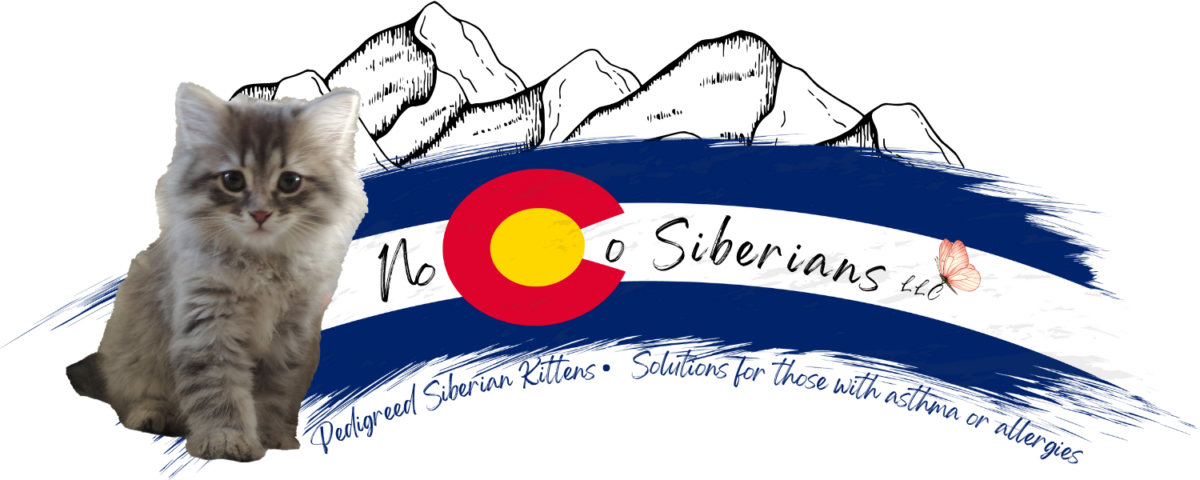The Siberian is a native cat of Russia. It can be found in snowy forests, back alleys of some of Russia’s largest cities and on the icy plains of the Taiga River. Little is known about their early history and development, but the earliest known reference to a longhaired Russian cat is from 1000AD and they have existed in Russian fairy tales and folklore ever since.
The first Siberian was imported to the United States from their homeland in 1990. They are known as loving, intelligent and beautiful household pets that love playing with – and in- water!
It is said that the Siberian cat’s heart is as warm as its homeland is cold. IT is true that the Siberian is a cat that loves people and wants to be with them. It is not shy with strangers and it is happy to play host, chatting away in charming trills and chirps. It tends not to be as needy as some breeds, but will welcome your attention when you’re ready for snuggles.
There are two types of Siberians: the traditional which are calico in coloring, tabbies, bi-colors and solids. The other variety is called color point or “Neva Masquerade”, both for the Neva River in Siberia and the mask-like appearance of the color point. These cats have stunning blue eyes and their extremities can be tipped in gray, red and brown.
Their athletic build supports their reputation for being exceptionally agile jumpers. Their full neck ruff and triple very water-resistant medium-long coat helped them deal with the harsh Russian winters. This, coupled with their dog-like personality, makes them an energetic, fun-loving feline. They tend not to be shy with strangers, as is so common in some cat breeds. They are a loyal, affection and playful breed.
The Siberian has a medium long coat that is resistant to matting and luxuriously soft. They are naturally healthy and easy-keepers.
Activity – 6
How lively is the cat. (10 would be a busy, active cat)
Playfulness – 8
How much the cat needs or desires to play with its owners or other animals. (10 would suggest a cat that needs a lot of playtime with you and other pets)
Attention – 5
How much the cat will need human attention. (1 would refer to a cat that did not mind spending a lot of time alone)
Affection – 7
How loving and adoring they will be toward their owner. (lower the rating, the less affectionate)
Communication – 3
How much the breed tends to meow. (higher the rating, the more the cat will like to “talk” to you)
Health – 9
Healthy overall a breed tends to be. (10 would refer to a cat that has few genetic weaknesses)
Grooming – 3
How much will you need to groom the breed. (1 would suggest little grooming on your part)
Children – 8
How well a cat interacts with children. (high rating is a cat that should be in a home with children)
Pets – 8
How well a cat interacts with your other pets. (low rating would indicate a breed that should not be put into a household with multiple pets)
Please keep in mind that a cat will not be loving to someone who isn’t loving to it, even if the cat is determined to be of a very loving breed.
